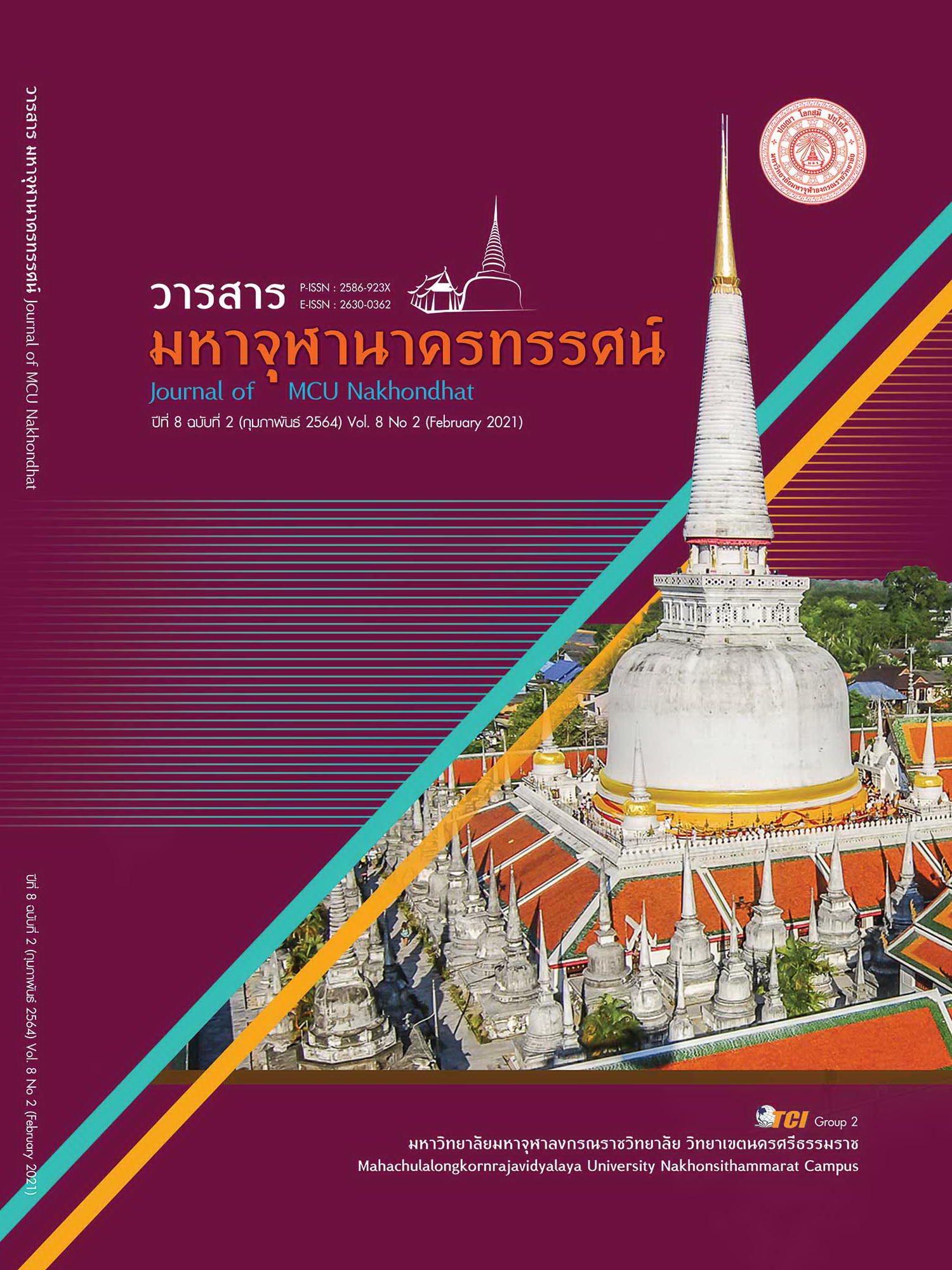THE TWO SIDES OF THE MEKONG CULTURE AND THEIR PARTICIPATION IN DEVELOPMENT: A CASE STUDY OF LOCAL COMMUNITY MARKET ON THE THAI - LAO BORDER, CHONG MEK STATION, SIRINDHORN DISTRICT, UBON RATCHATHANI PROVINCE
Main Article Content
Abstract
This research is a qualitative research which aims to study The two sides of the Mekong culture and their participation in the development of the Thai - Lao border local community market at Chong Mek station, Sirindhorn District, Ubon Ratchathani Province. Target group was government official consisting of the district development of Sirinthon, Subdistrict Administrative Organization Chongmek, Subdistrict Municipality Chongmek total of 5 people. Community leader and Villagers in the community consisting of the village headman Chong Mek, headman, village Board, members of the Chong Mek Sub - district municipality, member of Chong Mek Subdistrict Administrative Organization total of 22 people. Observed by using deep interview and participation observation and nonparticipation observation as tools to gather field information together with studying the documents and related researches, then analyze the obtained information in term of content and present them by descriptive analysis. The research result found that the two sides of the Mekong culture are another important tool to help connect the good relations between Thais and Lao people within the framework of community culture in coexistence, including being involved in operational initiatives, receiving benefits, and monitoring results. It is a very necessary process for developing it to be systematic and correct because participation is a cornerstone of strength and sustainability. As well as analysis of the situation of the local community market on the Thai - Lao by using SWOT as a tool to analyze strengths, weaknesses, opportunities and limitations. Another part that will guide the development of the local community market to prosper. As a result, the border trade economy continues to grow despite the constant fluctuation of the economy. This strengthened and resulted in the economic growth of border trade even though the economy fluctuated and changed all the time.
Article Details
References
จุฑารัตน์ ชมพันธุ์. (2555). การวิเคราะห์หลัก “การมีส่วนร่วมของประชาชน” ใน “The Public Participation Handbook: Making Better Decisions through Citizen Involvement” ในบริบทประเทศไทย. วารสารการจัดการสิ่งแวดล้อม, 8(1), 123-141.
ชิตพล ชัยมะดัน. (2558). การค้าชายแดนโอกาสของประเทศไทยในประชาคมเศรษฐกิจอาเซียน: ไทย - กัมพูชา. เรียกใช้เมื่อ 27 ตุลาคม 2560 จาก http://www.gspa.buu.ac.th
ทวี วัชระเกียรติศักดิ์. (2559). การสร้างความเข้มแข็งทางเศรษฐกิจให้กับชุมชนโดยการพัฒนากลุ่มอาชีพ ในพื้นที่องค์การบริหารส่วนตำบลพลสงคราม อำเภอโนนสูง จังหวัดนครราชสีมา. วารสารวิชาการบริหารธุรกิจ, 5(1), 43-54.
ธนชาติ ปทุมสวัสดิ์. (2559). การมีส่วนร่วมของประชาชนในการเสริมสร้างชุมชนเข้มแข็ง กรณีศึกษาเฉพาะชุมชนตลาดฝั่งโขง ดอนเมือง กรุงเทพมหานคร. วารสารรัชต์ภาคย์, 10(20), 178-189.
บำรุง บุญปัญญา. (2549). 3 ทศวรรษ แนวคิดวัฒนธรรมชุมชน. กรุงเทพมหานคร: โครงการหนังสือ ดอกติ้วป่า.
ปรีดา พูลสิน. (2555). การมีส่วนร่วมของชุมชนในการจัดการความรู้ทางศิลปวัฒนธรรม: กรณีศึกษาชุมชนวัดโสมนัส. วารสารวิจัยและพัฒนา, 4(1), 60-66.
ศรุติ สกุลรัตน์. (2556). ตลาดการค้าชายแดนไทย - กัมพูชาจากวิถีชาวบ้านสู่ประชาคมเศรษฐกิจอาเซียน. เรียกใช้เมื่อ 27 ตุลาคม 2560 จาก http://www.gspa.buu.ac.th
สันติชัย เอื้อจงประสิทธิ์. (2551). การศึกษาวิจัยในหน่วยงานท่องเที่ยวของรัฐ. กรุงเทพมหานคร: สามเจริญ พาณิชย์.
สุจินต์ หลีกภัย. (2553). การมีส่วนร่วม. เรียกใช้เมื่อ 27 ตุลาคม 2560 จาก http://slideplayer.in.th
อุดมศักดิ์ สินธิพงษ์. (2558). ชุมชนท้องถิ่นกับการมีส่วนร่วมจัดการทรัพยากรธรรมชาติอย่างยั่งยืน. วารสารนักบริหาร, 35(1), 104-113.
อุดร หลักทอง. (2558). แนวทางการสร้างความเข้มแข็งของชุมชนพหุวัฒนธรรม. วารสารสารสนเทศ, 14(2), 37-45.


